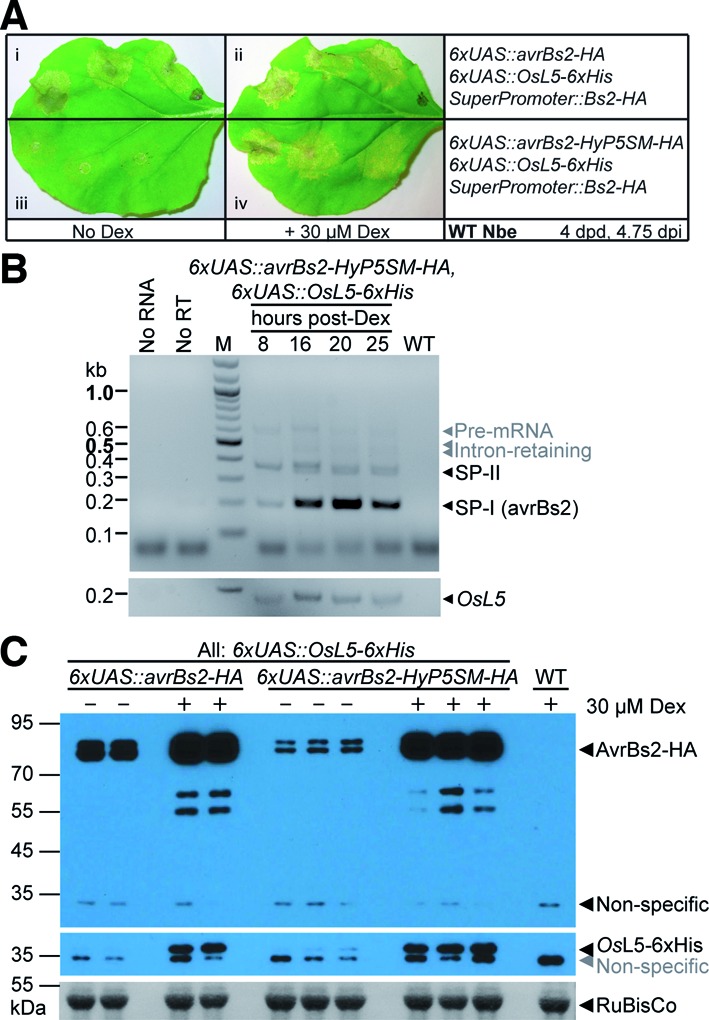Figure 4.

Comparison of single and dual regulation by chemical induction. (A) Representative wild-type Nicotiana benthamiana leaves were spot infiltrated to compare the extent of HR phenotype from (i, ii) pTA7001 avrBs2-HA (only regulated by the Dex-inducible promoter) or (iii, iv) pTA7001 avrBs2-HyP5SM-HA (also includes splicing regulation), with or without 30 μM Dex treatment. Leaf spots were also co-infiltrated with pTA7001 OsL5–6xHis and p1776 Bs2-HA. (B) Top: RT-PCR detection of avrBs2-HyP5SM-HA transcripts from transiently transformed N. benthamiana leaves at different time points post induction with Dex. Controls shown are no RNA or no RT enzyme in cDNA synthesis reaction and RT-PCR from wild-type tissue. Bottom: RT-PCR detection of OsL5 transcripts. (C) Top: Anti-HA western blot to detect protein expression from avrBs2-HA or avrBs2-HyP5SM-HA constructs induced with Dex or mock induced. Samples are from biological replicates. Leaf tissue were also co-infiltrated with pTA7001 OsL5–6xHis, except for the wild-type control. Middle: Anti-OsL5 western blot. Bottom: Ponceau S stain of the large subunit of RuBisCo as loading control.
